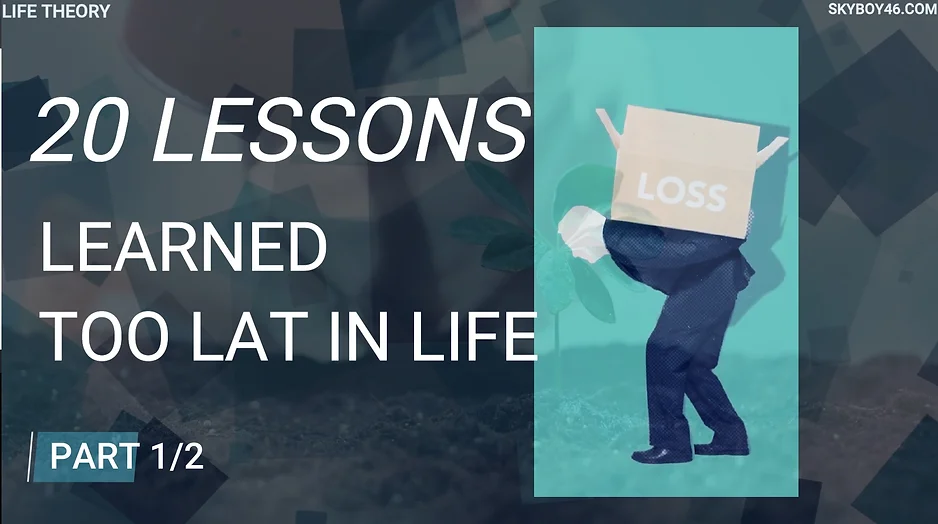Is hypnosis a parlor trick or a legitimate way to unlock the mind’s hidden depths? While pop culture has turned it into a spectacle, science suggests that hypnosis can be a powerful tool for accessing buried memories and reshaping thought patterns. From its bizarre origins in the 18th century to its modern revival in therapy, hypnosis has remained shrouded in mystery and skepticism. But as neuroscience sheds new light on its effects, could this misunderstood practice be the key to unlocking deeper self-awareness and healing?
SUBSCRIBE: https://www.youtube.com/@LifeTheory46
VISIT: https://linktr.ee/lifetheory46
Get You Monthly Life Stories in Advance & Our Premium Learning Packs HERE:
The Truth About Hypnosis: Myth or Mental Mastery? – Life Stories 323
When you hear the word “hypnosis,” you might picture a stage magician swinging a pocket watch, lulling someone into a trance, and then making them cluck like a chicken. It’s the kind of act that seems less magical and more like a gimmick—a fun sideshow, not to be taken seriously. But peel back the layers of this spectacle, and you’ll find that hypnosis isn’t just for show. Beneath the theatrics, there’s a rich history and a body of research suggesting that when done correctly, hypnosis can be a legitimate way to tap into parts of our minds we’ve long kept hidden.
Hypnosis as we know it took its first, rather bizarre steps into the world during the late 18th century, when a German physician named Franz Mesmer introduced a concept he called “animal magnetism.” He claimed that an invisible magnetic fluid could restore health by aligning the body’s energies. His method involved staring deep into patients’ eyes while making “magnetic passes” over their bodies, supposedly directing this fluid to where it was needed most. It was a spectacle fit for the strange era it emerged from, and while the procedure had no scientific merit, something curious happened—some patients did seem to get better.
Though Mesmer’s theories were eventually debunked, the intrigue surrounding that altered state remained. Clinicians wanted to know what exactly was going on when people entered that trance. A Scottish ophthalmologist named James Braid, captivated by this peculiar state, coined the term “hypnosis,” borrowing from the Greek word for sleep. Although subsequent research clarified that hypnosis wasn’t really akin to sleep, it had a similar effect: both states could draw the mind away from the outside world and deepen focus inward.
The story of hypnosis is filled with twists and turns. It gained some traction in the late 19th and early 20th centuries when notable figures like Sigmund Freud and Josef Breuer used it in early forms of talk therapy. Yet even they were hesitant, not just because the results were inconsistent, but because hypnosis seemed to delve into uncharted and potentially dangerous mental territory. Freud eventually abandoned hypnosis for his psychoanalytic techniques, citing that it didn’t suit his direct style. This ambivalence contributed to hypnosis slipping into the background as a credible therapeutic practice.
But time has a way of cycling old ideas back into relevance. In the past two decades, advancements in neuroscience, especially brain imaging, have reignited interest in hypnosis, alongside techniques like Eye Movement Desensitization and Reprocessing (EMDR). Modern clinicians use these methods to guide patients into a relaxed, trance-like state where difficult memories can be processed with greater ease. The shift in perception has moved away from skepticism toward cautious optimism, as new evidence supports the idea that hypnosis, when performed under controlled conditions, can unlock parts of our mind that conventional therapy struggles to reach.
Now, let’s address the myths head-on: can someone get “stuck” in a hypnotic trance? The answer is no. Hypnosis involves suggestions that a person can choose to accept or reject, and it’s impossible for a person to remain indefinitely under its influence. The relaxed state achieved in hypnosis simply makes the mind more open to suggestion, not helpless. If someone doesn’t want to be hypnotized, their mental barriers will remain up, making the process ineffective. So, if you do find yourself sitting opposite a hypnotherapist, know that you’re always in control, and you’re only going as far as you’re willing to let yourself go.
Despite its long history, hypnosis hasn’t always been treated with respect in the scientific community. It was often seen as a fad, even relegated to the realm of entertainment. Yet while popular culture toyed with hypnosis as a spectacle, serious clinicians continued to study its potential. The reality is, our brains are capable of storing vast amounts of information, much of which we don’t consciously access. Sometimes, memories get shelved because they’re painful, while other times they seem insignificant. These stored experiences, however, can still affect our emotional health. Hypnosis allows us to quiet the mind enough to access these deep-seated memories, giving us a chance to confront what’s been quietly influencing our thoughts and behaviors.
It’s important to recognize that this journey isn’t without its challenges. Exploring memories that bring distress to the present is never an easy task, and it requires delicate handling, particularly because people are more vulnerable when in a hypnotic state. That said, our minds are resilient. Hypnosis doesn’t overwhelm or trap us; it works because we allow it to. The trust between the practitioner and the participant is paramount, as the process involves letting go of inhibitions and opening up to suggestions that can help unravel the complexities within.
If traditional therapy has left you feeling closed off or guarded, hypnotherapy may offer a different path—one where you can access what’s been locked away in the recesses of your mind. Centuries of fascination and countless practitioners suggest there’s something valuable in hypnosis, even if we’re still working out the finer details. What it comes down to is giving it a fair shot. After all, the mind’s depths have been known to hold the keys to our healing. Sometimes, you just need the right state of mind to find them.
–> Read More Life Stories Here:
https://www.lifetheory.us
https://www.lifetheory.eu
Buy all of our Life Stories & Our Premium Learning Packs. Listen or Read to them anytime you want. Have them Forever.
You can get each monthly lesson on our website at https://www.skyboy46.com/store
SHARE THIS STORY
Visit Our Store
SHOP NOW
www.skyboy46.com & www.myskypet.com
Designed For Pet Lovers & Introverted Souls
Sport, Hobbies, Motivation, Music & Art






~EXPLORE MORE~
www.linktr.ee/skyboy46


